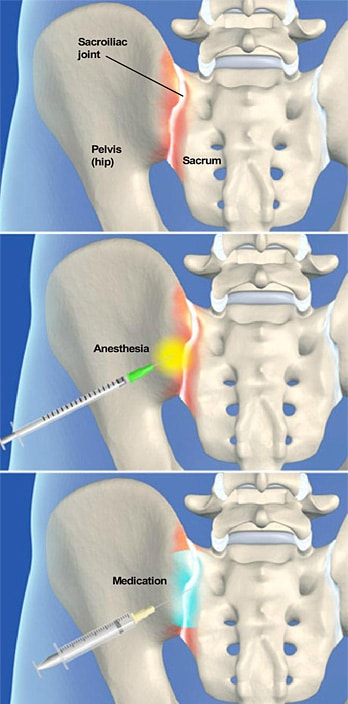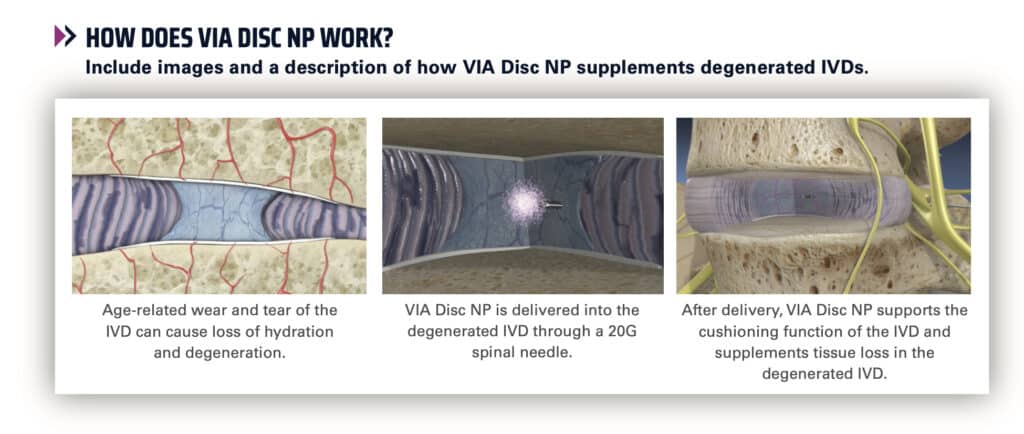Sacroiliac Joint Steroid Injection
A Sacroiliac Joint Steroid Injection delivers local anesthetic and a steroid medication into the area between your sacrum and pelvic bone. Problems in a sacroiliac joint can cause pain in your lower back, buttocks, and legs. Typically, a joint causes pain on one side of your lower body.
The anesthetic numbs the area of the injection, providing temporary pain relief. The steroid medication provides long-lasting pain relief, but it usually doesn’t begin working until 24 to 48 hours after the injection.
 OVERVIEW
OVERVIEW
Your Pain Management physician performs this injection procedure to relieve pain caused by arthritis in your sacroiliac joint, where your spine meets your hipbone. See the top illustration. The procedure is detailed below. Ask your doctor about the risks, as well as what to expect after the procedure.
1. LOCATING THE SACROILIAC JOINT
You must lie face down for this procedure, with a cushion under your stomach for comfort and to arch your back. The physician uses touch and a fluoroscope to locate your sacroiliac joint.
2. INJECTING THE ANESTHETIC
Once he has found the sacroiliac joint, your doctor injects a local anesthetic to numb the skin and all the tissue down to the surface of the sacroiliac joint, as shown in the middle illustration.
3. INSERTING THE NEEDLE
The physician advances a needle through the anesthetized track and into your sacroiliac joint.
4. INJECTING THE STEROIDS
As shown in the bottom illustration, the doctor injects a steroid/anesthetics mix into your sacroiliac joint, bathing the painful area in medication. Steroid medication can reduce swelling and inflammation in the joint.
5. RECOVERING FROM THE PROCEDURE
Your doctor removes the needle and places a small bandage to cover the tiny surface wound. Your pain should be improved immediately after the injection from the local anesthetic, but you’ll have some soreness in the area, which we can control with oral medication. The steroid medication takes two to three days to have an effect in most people.
MORE INFORMATION
For more information about nerve blocks and epidurals, refer to SSI’s Block Suite.
Find out more about SSI’s Pain Management procedures.
Conservative care & rehabilitation (non-surgical procedures)

